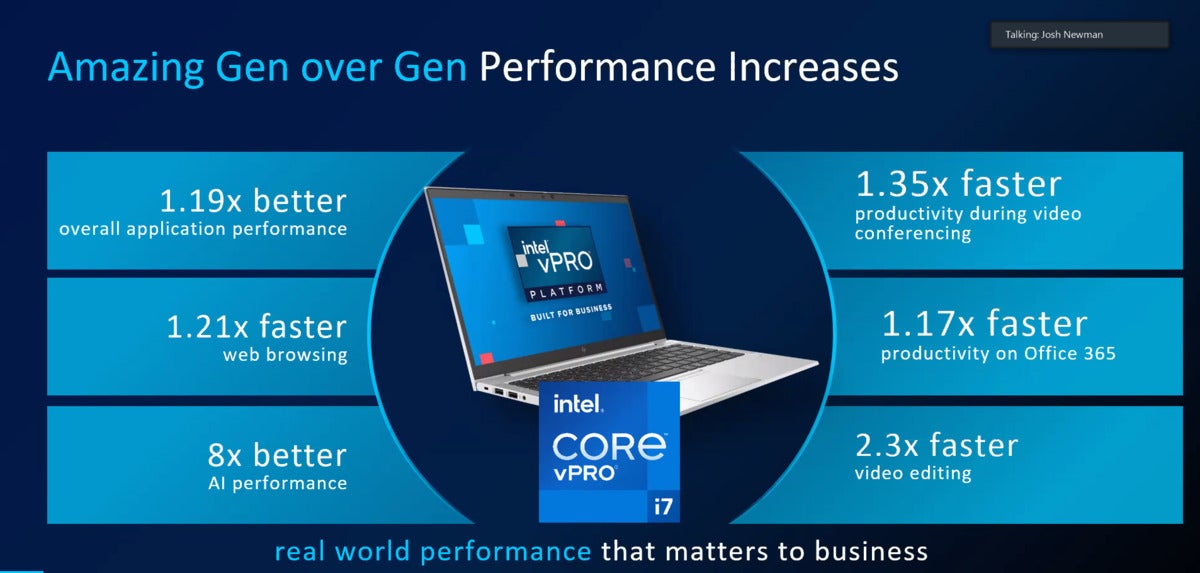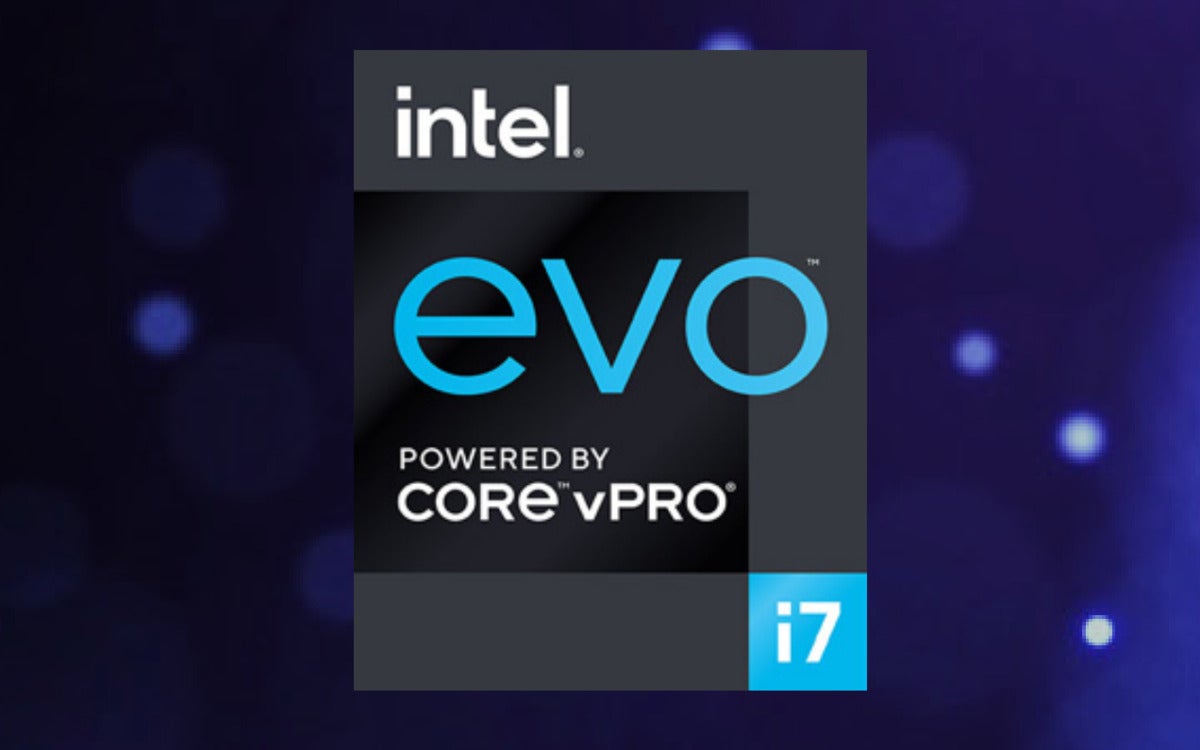Intel plans to brand business notebooks that use new Tiger Lake vPro chips under the Evo brand.
Intel
Today’s Best Tech Deals
Picked by PCWorld’s Editors
Top Deals On Great Products
Picked by Techconnect’s Editors
During CES Monday, Intel announced the next phase of its vPro program for business PCs, adding the 11th-gen “Tiger Lake” Core chips to the vPro line. The company will use Evo branding to promote the vPro line, and incorporate CET and TDT technologies into Intel Hardware Shield protection.
More than 60 laptops using some combination of vPro and the Evo branding will be rolling out this year, though the company didn’t say exactly when business customers could expect the first Evo laptops. Intel originally designed the Evo brand as a consumer initiative, signaling that the laptop would be engineered for fast response times, long battery life, and the ability to instantly wake.
Intel appears to be organizing the vPro processor lineup around four chips, all with four cores and eight threads. These include the Core i5-1140G7 (1.1GHz base, 4.2GHz turbo) and Core i5-1145G7 (2.6GHz base, 4.4GHz turbo); and the Core i7-1180G7 (1.3GHz base, 4.6GHz turbo) and Core i7-1185G7 (3.0GHz base, 4.8GHz turbo). These new vPro platforms will also tap the Intel Xe GPU inside the 11th-gen Tiger Lake chips, too.
 Intel
IntelIntel’s new 11th-gen vPro chip lineup.
Intel says overall app performance will jump by about 20 percent, in part thanks to 10nm SuperFIN transistor technology. Intel said the boost is comparable to all of the “plus” node improvements it made over the lifespan of its 14nm manufacturing node. The Tiger Lake architecture also comes with what Intel is calling an 8X improvement in AI, a technology that has struggled to realize benefits in the consumer market, but may find more solid footing in business applications.
In general, though, you’ll see the most vPro benefits in day-to-day business operations—such as surfing the Web to find a document that you can share in a Zoom meeting with background-blur enabled, said Stephanie Hallford, general manager of business client platforms for the Client Computing Group at Intel.
 Intel
IntelIntel’s Hardware Shield technology is nothing new, debuting in 2019’s 8th-gen vPro chips and receiving some additional capabilities in the 10th-gen lineup. Hardware Shield’s purpose is to essentially provide hardware-level protection for fundamental attacks on the PC’s firmware. With these 11th-gen Core chips, Intel has added Intel Control Flow Technology (CET) and Intel Threat Detection (TDT) under the Hardware Shield umbrella.
Intel announced CET protections would apply to all Tiger Lake processors (and not just the vPro chips) last summer. Intel’s CET is designed to protect against the misuse of legitimate code through control-flow hijacking attacks—widely used techniques in large classes of malware, according to Tom Garrison, vice president of Intel’s Client Computing Group.
Intel’s Threat Detection Technology, meanwhile, is essentially silicon-based security AI, according to Intel. It provides telemetry that can provide administrators with insights about ongoing attacks. In all, Hallford said, the new 11th-gen vPro platform is “the world’s best business processor Intel has ever built.”
Note: When you purchase something after clicking links in our articles, we may earn a small commission. Read our affiliate link policy for more details.
As PCWorld’s senior editor, Mark focuses on Microsoft news and chip technology, among other beats.


